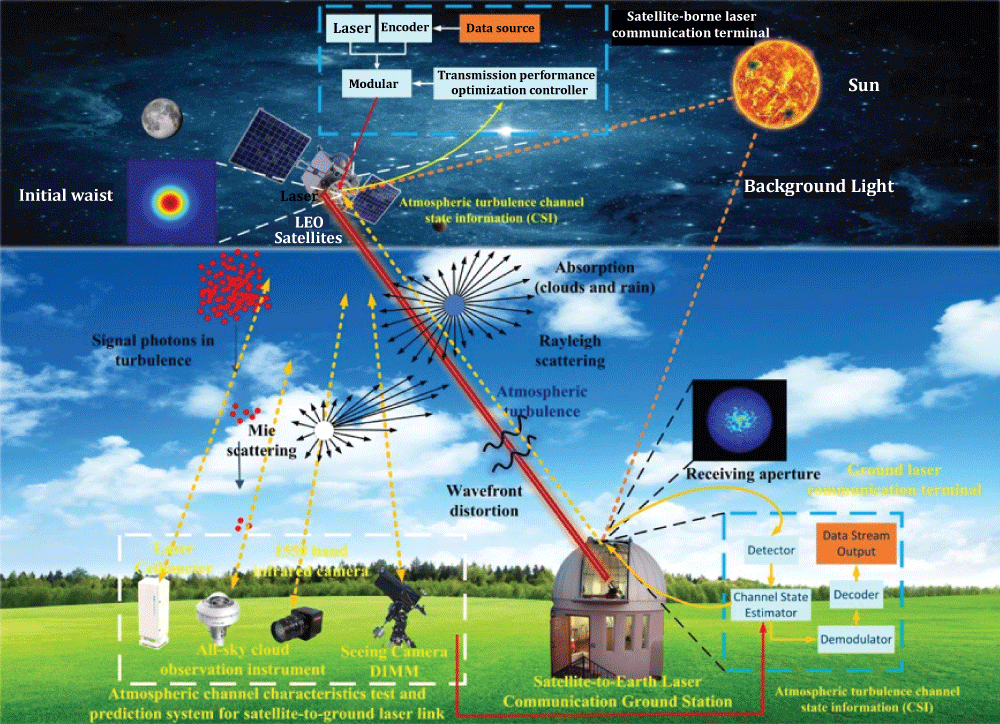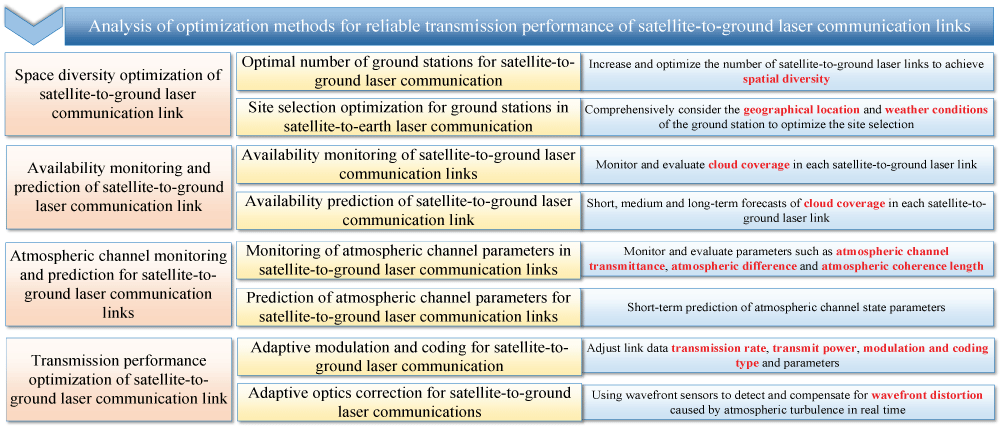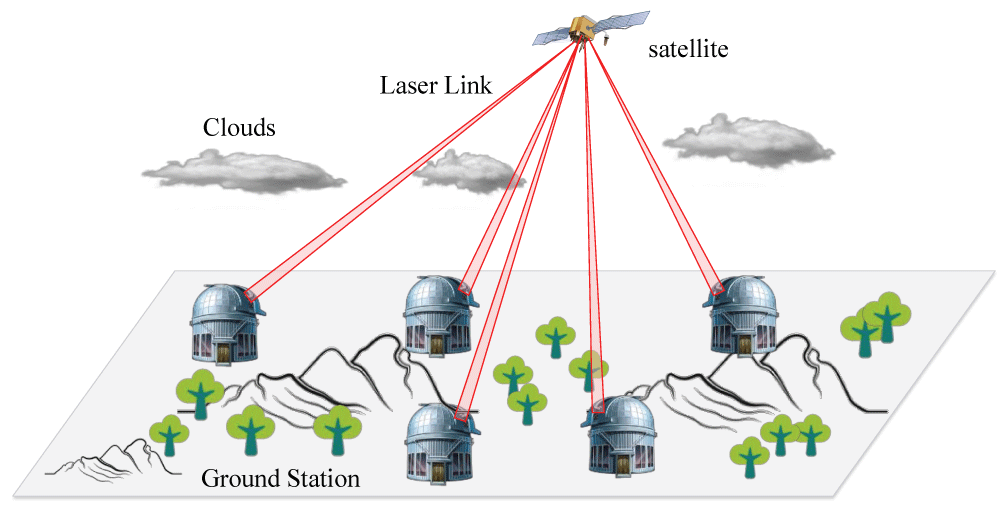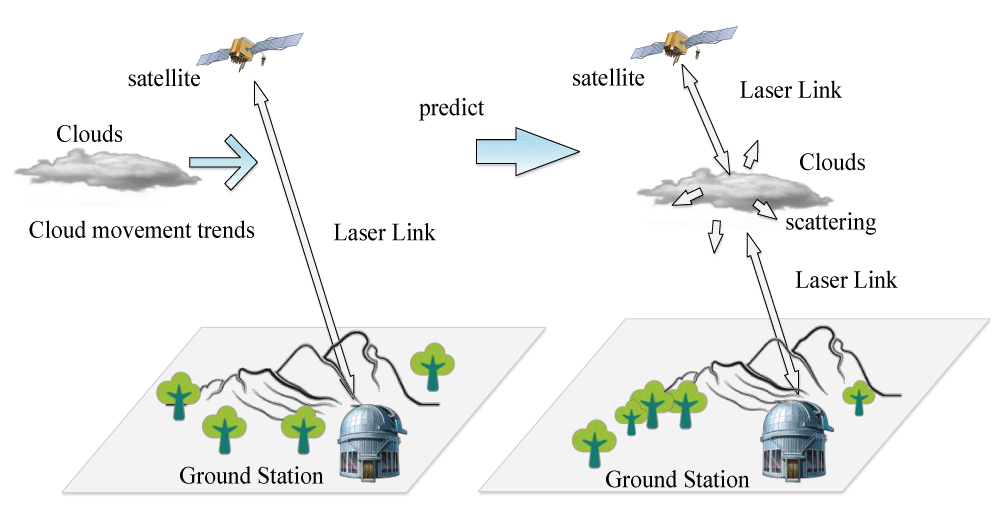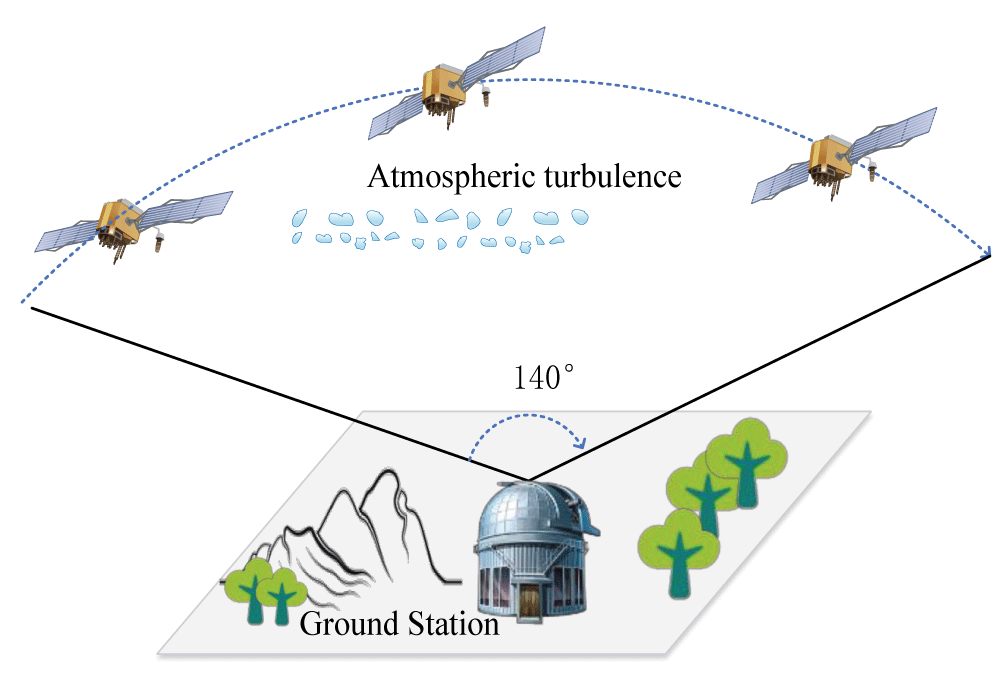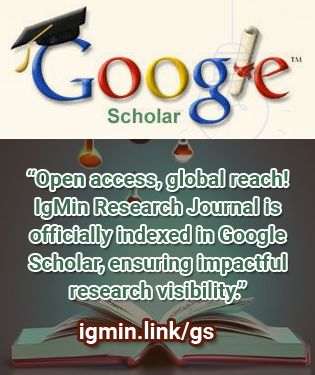Abstract
The satellite-to-ground laser communication link plays a crucial role in addressing the technical bottleneck of high-speed information transmission between satellite and ground networks. However, the impact of atmospheric channel conditions poses challenges to the link performance. To overcome these challenges, this paper presents a comprehensive analysis of the characteristics and influencing factors of the satellite-to-ground laser communication link. It summarizes methods for optimizing the transmission performance of the link and proposes approaches for optimizing, monitoring, and predicting the link performance through factors such as the optimization of ground station quantity and location, link availability, link transmission quality, and adaptive coding and modulation. These methods enable the optimization of the transmission performance of the satellite-to-ground laser communication link, thus significantly contributing to the realization of high-speed and reliable laser communication between satellite and ground networks.




